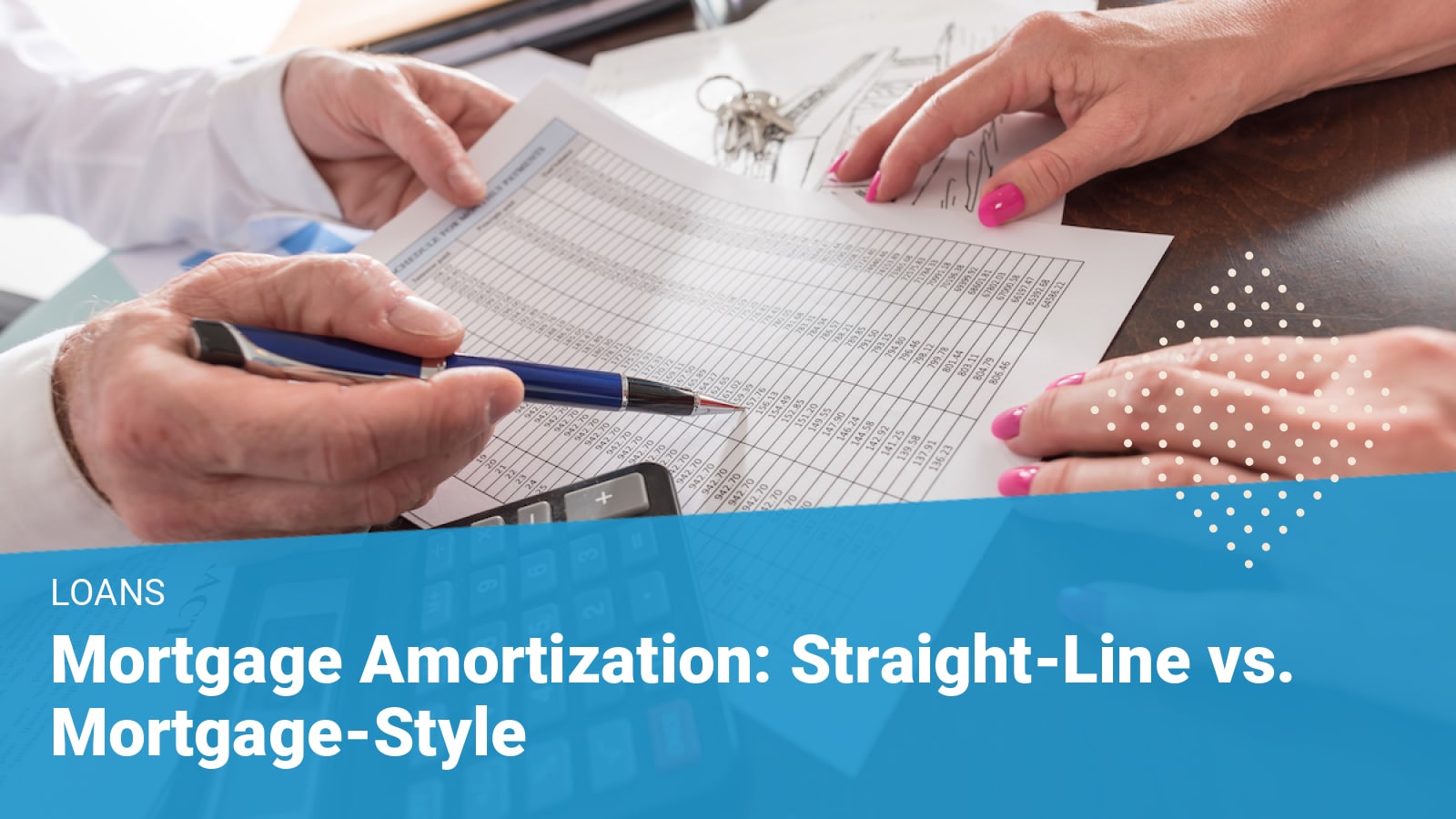Loan amortization is when you pay off a debt in equal installments. Part of the payment is applied to the principal, and part to the interest.
However, with mortgage loan amortization, the amount applied to the principal starts out smaller and gradually increases with every installment.
Your amortization schedule shows how much of your installment goes to the principal and the interest of the loan.
When shopping for a mortgage, there are typically two different ways a loan can be calculated: Straight-line amortization and mortgage-style amortization.
Which is right for you? Let’s take a look at the differences.
Tip: Use a mortgage amortization calculator to determine your repayments and interest.
Straight-Line Amortization
The straight-line amortization calculation is the simplest way to repay a mortgage loan. Also referred to as a constant amortization, the amount applied to the principal of the loan remains constant with every payment.
Although the amount applied to the loan principal remains the same, the amount applied to interest varies based on the outstanding loan balance.
Consequently, your installment payments will also vary.
At the beginning of the loan, installment payments will usually be higher. Over time, the amount of each payment becomes lower as the outstanding balance decreases.
You can calculate your payments with a straight-line amortization calculator.
Mortgage-Style Amortization
Mortgage-style amortization is the most traditional way of repaying a mortgage. The method is sometimes referred to as the constant payment method because every installment payment is the same throughout the duration of the loan.
With mortgage-style amortization, the amount applied to the principal and the amount applied to interest change. At the beginning of the loan, a higher proportion of the payment will be applied toward interest.
A similarity between the straight-line and the mortgage-style amortization is that interest payments are based on the outstanding loan balance in both methods of calculation.
Advantages and Disadvantages of Straight-Line and Mortgage-Style Amortization
If you’re looking for the fastest method to reduce your outstanding loan balance, the straight-line amortization method is the best option.
The mortgage-style amortization method offers the benefit of flat installment payments that do not change. This typically makes budgeting easier.
With the straight-line method, some borrowers might find it difficult to manage the larger initial payments. These higher early payments can affect your budget and make it more challenging.
Most of the interest is paid at the beginning of the loan with a mortgage-style amortization, so it can take longer to reduce the principal of the loan.
Each option brings advantages and disadvantages. It is important to research the options and to choose the one that is best for your financial situation.
Mortgage Amortization Quiz
Test your knowledge
What is mortgage amortization?
Mortgage amortization refers to the process in which a borrower makes installment payments to repay the balance of the mortgage loan over time. Each installment covers a portion of the loan principal along with interest payments as listed in the amortization schedule.
How do I calculate loan amortization?
If you are wondering how to calculate loan amortization, the easiest way is to use an online loan amortization calculator.
What is a loan amortization schedule?
A loan amortization schedule is a list of periodic loan payments. The schedule will indicate the principal loan amount and the interest amount that make up each payment, until the loan is repaid in full.


